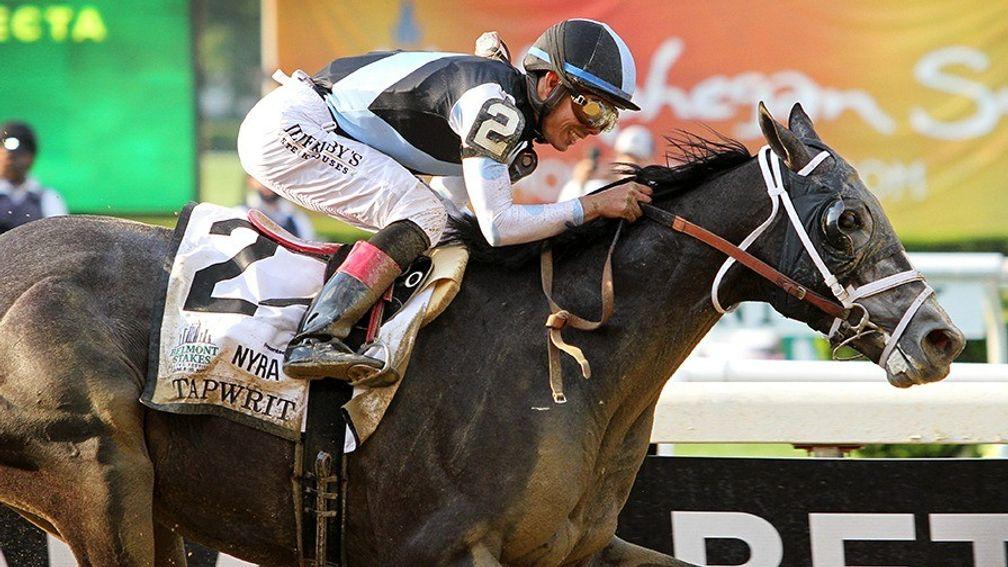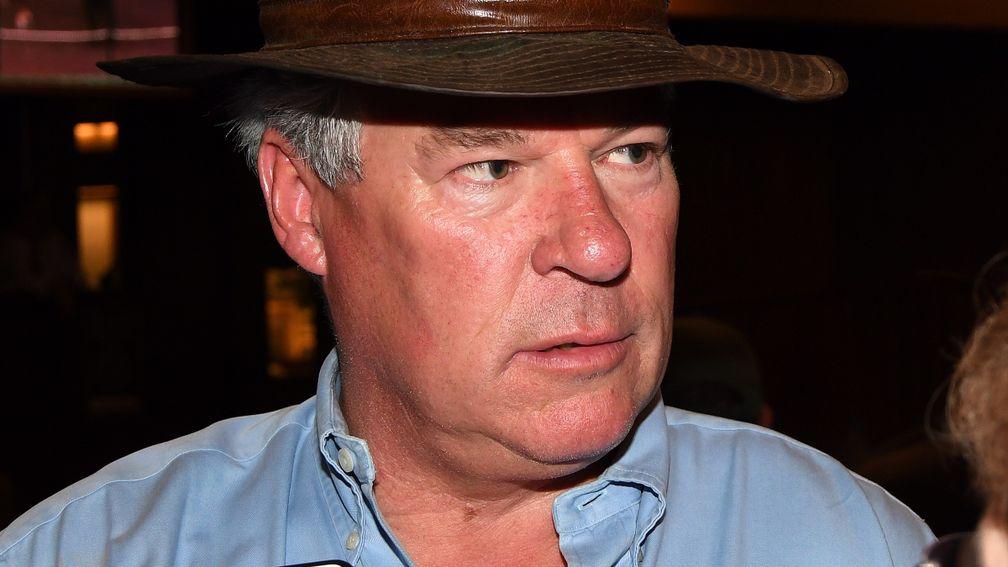'Getting more and more difficult': launching new sires a challenge in 2019
Michele MacDonald talks to leading US stallion masters about the market

Launching a new stallion has perhaps never been more difficult than it is today, but while American stud managers agree on the challenges, they don't tend to see any changes on the horizon.
With market-leading stallions covering books of 200 or more mares a year at the same time the overall number of mares being bred continues to decline, young horses sometimes are left with less than the ideal number of mates to support their chances for success.
Pressed by these deflating dynamics, stallion owners find themselves scrambling to buy mares, as some have done at the November and January sales in Kentucky, in addition to making deals on fees to lure breeders.
"In general, the stallion market is not easy right now," said Mark Taylor, a vice president with his family's Taylor Made Farm, which stands three stallions with first yearlings this year and another with first foals of 2019.
"Any of the top-end horses at a lot of farms are going to breed books of 200 to 250, and that sucks so many mares out of the market," Taylor noted. "In the past, a lot of top stallions climbed their way up from humble beginnings; you look at horses like Distorted Humor or when we had Saint Ballado, even Tapit and War Front.
"They were in a better position when they came along to at least get a fair shake.
"It's getting more and more difficult. There are a lot of nice stallion prospects, horses that would have been viable here 20 years ago that come off the track and people ask me, 'can you sell this horse privately?' And I'm like, 'the horse might be worth $15,000 to Jamaica.' Whereas 30 years ago, he could have been standing here and had a chance to see if he was the real deal. I think that's unfortunate."
Another factor stallion owners have to deal with is that breeders tend to focus on first-year stallions and then move on the following year to the next group, amplifying the pressures to fill young horses' books before their progeny race, said Hill 'n' Dale Farms owner John Sikura.
"If you're not willing to stand in and buy mares and help drive your horse's book if he doesn't have everything everybody wants, then you're going to be disappointed with book size," said Sikura, who envisions current trends continuing and perhaps escalating.
Both Hill 'n' Dale and Gainesway farms and partners have been among the stallion operations buying mares to support their horses during the upcoming breeding season. Undefeated Grade 1 winner Army Mule will begin his stud career in February at Hill 'n' Dale while Belmont Stakes winner Tapwrit will be launched at Gainesway with partners including Bridlewood Farm and Mandy Pope.

"We're very proactive with Army Mule - we believe in the horse. We're going to get outside support, but we're not going to rely solely upon the public to justify our opinion," Sikura said. "We're going to support him with mares and stand in there and make sure the horse is breeding the kind of mares we want and the volume of mares that give him the best chance to make it."
Sikura said Hill 'n' Dale took the same approach in standing Maclean's Music for his breeder Stonestreet Stables and everyone was rewarded with the stallion getting 2017 Preakness Stakes winner Cloud Computing in his first crop. Sikura and his father-in-law Edward McGhee bred Cloud Computing from their A.P. Indy mare Quick Temper and sold the colt for $200,000 as a yearling.
Maclean's Music, a speedy son of Distorted Humor who only raced once, covered 146 mares in 2018 and his fee has risen to $25,000 for 2019 after beginning at $6,500 in 2013.
Looking forward, Sikura has compared the potential of Army Mule, a now five-year-old son of Friesan Fire, to Maclean's Music and another successful stallion who began his career at Hill 'n' Dale, Candy Ride.
The Army Mule Partnership formed to support the horse at stud has so far bought six mares between the Keeneland November and January sales, spending a total of $351,000. Vincent Viola, the billionaire businessman who served in the US army and raced Army Mule, has pledged continuing support.
Army Mule will stand for $10,000 this year.
Gainesway and partners have been even more active in acquiring mares at auction for Tapwrit, a son of Tapit who will stand for $12,500. At the Keeneland November sale and through the first two days of the January sale, 19 mares had been purchased for a total of $1,627,000.
Michael Hernon, Gainesway director of sales, said support of young stallions combined with effective promotion and attractive fee pricing is critical.
"You have to give the horse enough representation and enough critical mass to get the progeny out there," he said.

Hernon indicated that horses like Gainesway's three-time leading sire Tapit, who began his career in 2005, might not have had as much chance to become successful if they were beginning their careers in the current environment.
"There's no question anymore that there are certain horses that would merit a shot at stud, however I think for one reason or another, be it race record or price or lack of internal support, they get very compromised opportunity," Hernon said.
Statistics compiled by the Jockey Club for North America underline the reality of the trends.
The percentage of mares covered by stallions with book size greater than 125 jumped from 21 per cent in 2014 to 32 per cent in 2018 while the percentage of stallions covering that many mares rose from three per cent to only five per cent. Therefore, about one third of the mare population is being covered by only about five per cent of stallions, narrowing the gene pool along with pushing aside opportunities for other horses.
At the same time, both the number of covering stallions and mares bred have been steadily declining. Just comparing 2010 to 2018, there were 25 per cent fewer mares being bred in North America last year - a loss of more than 10,000 mares - than there had been less than a decade earlier, while the number of active stallions fell by a staggering 44 per cent from 2,186 to 1,214.
Taylor said limiting stallion book size could make both the stallion market and the market for yearling colts more robust.
"We have no central governance within our business, which makes it impossible to try to institute any changes in any aspect of the business that you think might be good," said Taylor.
"But I think if you could get together and put a cap on the number of mares you can breed (to a single stallion), whatever everybody can agree on, 175 or 150 or whatever, I think it would be better for the breed because there would be more diversification."
"And it would help the market in that there would be more yearling colts bringing more money. The bullseye to get a stallion now is getting so much smaller that it kind of takes the sizzle out of taking colts to the yearling market because you know going in, what are the chances? It's like playing the lottery that you're going to get one that can actually make it (in the current stallion market)," he added.
Ideally, Sikura said he would like to see interest spread among "a larger, more varied group of horses" and support for horses be more constant after their first year at stud.
"In year one, everybody wants to go to your horse, then they pack their tent and go to another first-year horse in year two," he observed. "I'm in agreement to breed fewer mares as long as that demand would stay relevant until they run. When the progeny run, obviously the stallion will be more or less in demand."
However, Sikura said there is some validity for "an argument that, since we have a very selective, nomadic market that moves from horse to horse, when they like your horse, should you take as many mares as you can? If you don't, the next farm does."
"Everybody has their own philosophy," he said. "Some of the farms limit how many mares their horses cover in some years when there is surplus demand and then they don't capture that demand, and in other years, when (the stallions) are a little quiet, that number drops way down."
Sometimes stallion books are increased primarily to meet the needs of clients and retain relationships.
"When you're sold out (of seasons), they say, 'Please can I have one?' So, we add one or two. Sometimes with those large books I say it's not about greed, you're just trying to accommodate all of your customers and the demand. If you turn down a Graded mare, she goes somewhere else so you're really helping supply your competitor. It's sort of a double-edged sword," Sikura said.
"You like to control your numbers; you don't want to be excessive. I know Barbara (Banke) feels strongly with our Stonestreet horses (including Curlin and his champion son Good Magic) - she doesn't want to breed excessive numbers and that's great.
"But (breeders need to) call early or send a good mare because many of the horses are sold out before breeding season starts and there is not the ability to add 40 or 50 mares, like some of the farms do for other horses.
"We're fortunate that we have several horses now that are oversubscribed. I feel bad telling people you can't breed to Kantharos, you can't breed to Violence. It's only the first week in January and it's sort of unfair. But everybody wants to be in the same place at the same time."
That kind of convergence on popular horses not only makes it difficult for young stallions, it also hurts those whose progeny are not currently in the spotlight.
"It makes it difficult for the perceived-to-be non-commercial stallion who might be a proven horse but he isn't in vogue or fashionable anymore, and it's really difficult for that stallion," said Hernon, who does not expect any major changes in trends.
"The market does gravitate toward the new horse and the fresh thing, and maybe it would be great if we had a ceiling on the (stallion book) numbers, but this is a free market economy and that's just the way it is," he said. "We have to operate in the market given."
If you enjoyed this, you should also read:
House Rules leads strong second session of Keeneland January Sale
Published on 9 January 2019inInternational
Last updated 17:58, 9 January 2019
- $550,000 colt by 'on fire' Nyquist heads OBS Spring Sale trade
- Chaldean to shuttle to Cambridge Stud in New Zealand for 2024 season
- All aboard the Yulong stallion express! Japan’s Saudi Cup hero Panthalassa joins roster
- 'She’ll stay here now, she won’t be going back' - Amelia’s Jewel's dam Bumbasina will not be sold
- Poignant Satsuki Sho triumph for Nunthorpe heroine's son Justin Milano
- $550,000 colt by 'on fire' Nyquist heads OBS Spring Sale trade
- Chaldean to shuttle to Cambridge Stud in New Zealand for 2024 season
- All aboard the Yulong stallion express! Japan’s Saudi Cup hero Panthalassa joins roster
- 'She’ll stay here now, she won’t be going back' - Amelia’s Jewel's dam Bumbasina will not be sold
- Poignant Satsuki Sho triumph for Nunthorpe heroine's son Justin Milano